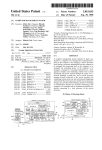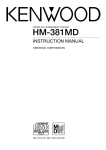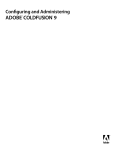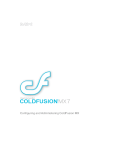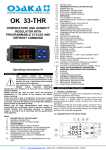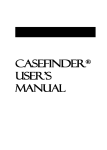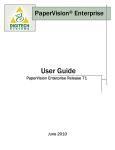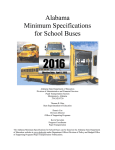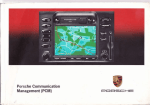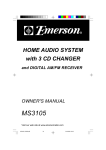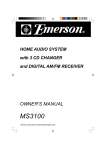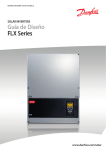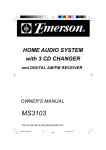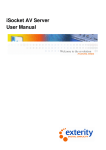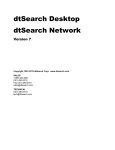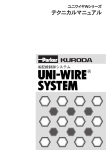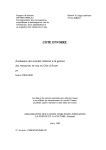Download Method of providing duplicate original file copies of a searched topic
Transcript
US006938083B1
(12> Ulllted States Patent
(10) Patent N0.:
Teague
(54)
(45) Date of Patent:
*Aug. 30, 2005
METHOD OF PROVIDING DUPLICATE
6,415,307 B2 *
7/2002 Jones et al. ............... .. 715/525
ORIGINAL FILE COPIES OF A SEARCHED
6,434,552 B1
8/2002
TOPIC FROM MULTIPLE FILE TYPES
6,654,758 B1 * 11/2003 Teague ..................... .. 707/101
DERIVED FROM THE WEB
Leong
.......
. . . . ..
707/4
dtSearch Desktop & dtSearch Web—User’s Manual—
Copyright 1991—2003 dtSearch Corp. Retrieved from http://
support.dtsearch.com/ftpipub/dtSearch6.pdf on Apr. 6,
2004*
“Electronic Publishing Guide” 1996 Adobe Systems Incor
(73) Assignee: Unisys Corporation, Blue Bell, PA
(US)
porated
Notice:
*
OTHER PUBLICATIONS
(75) Inventor; Tommy Kay Teague, Mission Viejo,
CA (US)
(*)
US 6,938,083 B1
http://WWW.lcschools.org/atatc/departs/graphics/
Subject to any disclaimer, the term of this
patent is eXtended or adjusted under 35
Course/1ess0ns/1A/E1ectr0nic%ZOPublishingpdf,*
“SEARCH’97 Information Server Manual” 1997 Verity, Inc.
U-S-C- 154(1)) by 700 days-
http://WWW.ojp.usdoj.gov/search97/doc/user/istoc.htm.*
This patent is Subject to a terminal dis-
Web Search” NEC Research Intitute 1998 IEEE.*
Claimm
Peltonen, Kyle “Adding Full Text Indexing to the Operating
System” Microsoft Corporation 1997 IEEE.*
* cited by examiner
Lawrence et al. “Context and Page Analysis For Improved
(21) Appl. No.: 09/620,615
(22) Filed:
Jul. 21, 2000
Primary Examiner—William A. Cuchlinski, Jr.
7
.
.
Assistant Examiner—Tam T. Phan
(74) Attorney) Agent) Or Firm flfred W‘ Kozak; Mark T‘
(51)
Int. Cl. ....................... .. G06F 15/173, G06F 7/00,
(52)
US. Cl. .................. .. 709/225; 707/101; 715/501.1;
(58)
Field of Search ............................... .. 709/225, 217;
Many document ?les in different formats can be doWnloaded
707/3’ 4’ 5’ 10’ 101; 715/501'1’ 523’ soul
from Websites Which can be selected for their speci?c
G06F 15/00
715/523
(56)
.
Starr,_ Lise
A. Rode
(57)
ABSTRACT
References Cited
content using search items as a Verity Search Engine and
US. PATENT DOCUMENTS
Web Server. After doWnloading into a user-Workstation, a
topic search Would not be ordinarily feasible to search ?les
of different formats. The present system and method enables
_
6,185,573 B1 *
2/2001 Angelucci et al. ..... .. 707/104.1
-
h-
b
-
h
d-ff
?l
f
-
6253 208 B1 * 6/2001 Wittgre?e et a1
7O7/1O41
6’271’840 B1 * 8/2001 Finseth et a1 ' """ "
715/51'3
6,304,872 B1 * 10/2001 Chao ........................... .. 707/5
top1c searc mg y convertmgt e 1 erent e ormats 1nto
a common format such as PDF Which then can easily be
topic-Searched by a browser Such as an Adobe Acrobat
Program
6,336,124 B1 *
1/2002 Alam et al. ............... .. 715/523
6,393,442 B1 *
5/2002 Cromarty et al.
6,415,278 B1 *
7/2002 Sweet et al. ................. .. 707/2
55”"
WINDOWS
(W1)
1%;
1W2)
715/523
(M1)
"5%
(HM “"“FEL'ELP
(H1)
(M21
£39m
("Hal stT'rIixATc'r
(“2) EXTRACT
ADOBE
Ma) coNIrgvn‘rin
PORTABLE
"an
Dgsumxr
(W4)
ADOBE
(M8) consglm'in
("4)
PDFHLEs
/
503022" ‘W51 W
(W61
SECTION
OF ORIG. FILE
(W7)
8 Claims, 12 Drawing Sheets
I!!!
SETION
0F DRIG. FILE
pm:
FILES
ADOBE
8
‘HH3) CONVEATER
(HH‘)
For
FILES
11%
TEXT
ADOBE
(H)3 coNVE’ATER
(“4)
PDF
FILEs
suncn
<—
U.S. Patent
Aug. 30, 2005
US 6,938,083 B1
Sheet 1 0f 12
VERITY
SEARCH
ENGINE
22
/
ADOBE
ACROBAT
1o
\
/
<-—-I~
L--—-—-—-> '
MEMORY
I H 09. SYSTEM
4
USER WORKSTATION
Figure 1A
12
14
U.S. Patent
Aug. 30, 2005
Sheet 2 0f 12
US 6,938,083 B1
“45-.5
:13.
:5
6:5
r“Ba50
54m.:
62.
,
£5
42.:
a;
5gom-:Es
"m<m.EZurOn-xwm0Uh E2%.:
U.S. Patent
(NP1)
(MP2) |
(MP3)
(NP4) |
Aug. 30, 2005
Sheet 3 0f 12
US 6,938,083 B1
SEARCH ALL PDF FILES
|
l
l
NAVIGATE TO PAGE IN PDF FILE
|
CLICK BUTTON on PAGE
|
Y
OPEN ORIGINAL FILE T0 TOPIC
|
SEARCHING NON-FBI: FiLES
Figure 2
U.S. Patent
Aug. 30, 2005
Sheet 4 0f 12
US 6,938,083 B1
45 Finding Other Matches
X
To ?nd other matches, use these buttons on the Acrobat Reader
toolbar.
[Search]
l§arch Resgltsj
Wevious Highlight] liNext Highlight |
To . . .
Cllck:
Find the next match
Next Highlight
Find the previous match
Previous Highlight
Display a list of documents
Search Results
that contain matches
Change your search
Search
OK
Figure 3
U.S. Patent
Aug. 30, 2005
Sheet 6 0f 12
US 6,938,083 B1
@
(W1)
ACOUIRE NAME OF INPUT
WINDOWSHELP FILE AND
OUTPUT RTF FILE
I
(W2)
OPEN wmnows
HELP FILE
I
INITIATE UTILITY TO REPORT COUNT
(W3)
OF TOPICS AND TOPIC IDs
I
(W4)
‘——————'>
GET NEXT
TOPIC
(wsE)
(W5)
NO
YES
(W6)
USE SENDKEYS TO WINDOWS
HELP FILE TO OPEN TOPIC AND
COPY TEXT TO CUPBOARD
I
COPY TEXT FROM CUPBOARD
AND FORMAT RTF PAGES
I
CONVERTING WINDOWS HELP FILE TO RTF
Figure 5
U.S. Patent
Aug. 30, 2005
US 6,938,083 B1
Sheet 7 0f 12
@
ACOUIRE NAME OF DIRECTORY
CONTAINING HTML FILES AND
NAME OF OUTPUT RTF FILE
(M1)
I
(M2)
GET NEXT FILE IN DIRECTORY
WITH HTML EXTENSION
I M a)
NO
YES
OPEN FILE WITH ACTIVEX
(M4)
CONTROL AND USE INNERTEXT
METHOD TO READ TEXT
I
(M5)
FORMAT TEXT
INTO RTF PAGES
I
CONVERTING HTML FILES TO RTF
Figure 6
(M35)
U.S. Patent
Aug. 30, 2005
US 6,938,083 B1
Sheet 8 0f 12
ACOUIRE NAIIIES OF CHM FILE,
(HI-I1) DIRECTORY CONTAINING HTML
FILES, AND OUTPUT RTF FILE
(HH2)
‘-———€
I
GET NEXT FILE IN DIRECTORY
WITH HTML EXTENSION
(HHEI
(HHS)
NO
YES
(HH4)
OPEN FILE WITH ACTIVEX
CONTROL AND USE INNERTEXT
METHOD TO READ TEXT
I
(HH5)
FORMAT TEXT
Into an; PAGES
I
CONVERTING HTML HELP (CHM) FILES TO RTF
Figure 7
U.S. Patent
Aug. 30, 2005
Sheet 9 0f 12
@
(CRP1)
OPEN RTF
FILE IN WORD
I
(cnPz)
USE WORD TO PRINT
TO FILE USING
A POSTSCRIPT DRIVER
FILE
OPEN POSTSCRIPT FILE
(CRP4)
m ADOBE
ACROBAT msmuan
use msmusn
(caps)
T0 PRODUCE
PDF FILE
(caps)
CONVERTING RTF FILE TO PDF
Figure 8
US 6,938,083 B1
U.S. Patent
Aug. 30, 2005
(31)
Sheet 10 0f 12
INITIATE SEARCH THROUGH
ADOBE ACROBAT
+
PRESENT LIST OF PDF
($2)
DOCUMENTS WITH
HITS T0 USER
L
(S3)
USER SELECTS PDF
DOCUMENT AND OPENS
IT TO FIRST HIT
(s5)
USER cLIcKs “OPEN
DOCUMENT“ au'n'on on
TOP OF PAGE
ORIGINAL DOCUMENT IS OPENED
(56)
TO TOPIC coumnme THE TEXT
IN THE PDF FILE '
USER CLICKS "NEXT an"
(S8)
BUTTON on TOOLBAR
OF PDF FILE
E
+
SEARCHING MULTIPLE FILE TYPES VIA PDF COPIES
Figure 9
US 6,938,083 B1
U.S. Patent
Aug. 30, 2005
Sheet 11 0f 12
US 6,938,083 B1
AcrobaTl-ieader - llielp1HMP Series Custo
-- E] x
- D X
i
This page contains
Open
l——
unformat'tod text.
Topic
_
Establish a Named Pipe to a COMS Application
Establishing a Named Pipe to a COMS Application
‘Note: This functionality is applicable to ClearPath servers only.
To establish a named pipe to a COMS application, a client program opens a
named pipe ofthe following form:
Notice the ?rst three nodes of the named pipes ?lename are ?xed:
\\<server>\P|PE|COMS. It the 4th node and beyond is a <Pipes PCM template>,
then the resulting dialog's service attribute (that is, the next CCF service in the
connection) is speci?ed by the template's service attribute. If this attribute is
unde?ned. then the ?rst node of the <Pipes PCM template> name is used as the
next CCF service in the connection. it a template exists having an asterisk as its
last character, this character is treated as a wildcard. This causes an association
with any named pipes ?lename that matches the characters preceding the
asterisk. When the wildcard templates con?ict, the template with the most
characters takes precedence. A template of onl an asterisk becomes the default
for named pipes ?les that do not match a speci ed ?lename.
Example:
A template of PAYHOLL\* would be applied to the named pipe
\\S Flvt\PlPE\COMS\PAYROLL\PAYWIND and
‘
\\SFtV1\PIPE\COMS\PAYROLL\PAYWIND\STAABC
If the 4th and subsequent nodes do not match to a <Pipes PCM template>, the
4th node itself is considered to be a <CCF service>. In this case, the resulting
dialog's service attribute (that is, the next CCF service in the connection) is this
<CCF service>. This connection then uses the Pipes PCM default template
(identi?ed by a *) for its connection attributes. No attributes are currently de?ned
for this detault template, but that doesn't prevent it from being modi?ed.
Other connection attributes are gleaned directly from NX/Services. These
attributes include: UserCode, ComputerName. Domain. PCUser, and IPAddress.
(F
UNFORMA'I'I'ED TEXT
Y 'iiiilg?
Fig.10a Fig.10b
U.S. Patent
Aug. 30, 2005
Sheet 12 0f 12
US 6,938,083 B1
Unisys CCF Administration and Prgaram...|—|l:l|><
$535 Establishing a Named Pipe to a COMS
Application
|
b
[E Note: This functionality is applicable to ClearPath
servers only.
To establish a named pipe to a COMS application, a client
program opens a named plpe of the following form:
Notice the first three nodes of the named pipes filename are
fixed: \\<server>\PlPE\COllllS. If the 4th node and beyond
Is a <P|PES PCM template>, then the resultlng dlalog's
service attribute (that is, the next CCF service in the
connection) is specified by the template’s service attribute.
If this attribute is undefined, then the first node of the <Plpes
PCIVI template> name is used as the next CCF service in the
connection. If a template exists having an asterisk as its last
character, this character is treated as a wildcard. This
causes an association with any named pipes tilename that
matches the characters preceding the asterisk. When the
wildcard templates con?ict, the template with the most
characters takes precedence. A template of only an asterisk
becomes the default for named pipes fiies that do not match
a specified filename.
'
Example:
ORIGINAL FILE
F'gu'e 10b
Fig.1oa Fig.10b
US 6,938,083 B1
1
2
METHOD OF PROVIDING DUPLICATE
ORIGINAL FILE COPIES OF A SEARCHED
TOPIC FROM MULTIPLE FILE TYPES
DERIVED FROM THE WEB
against the string that Was entered. NoW, When Word ?nds a
“hit” (match), then Word highlights the text and stops
searching. If the operator chooses “Find Next” option, then
the Word program repeats the process and continues the
search beginning just past the current hit. HoWever, this is
considered pretty much of a brute force and very sloW
CROSS-REFERENCES TO RELATED
APPLICATIONS
process of operation.
A“full text” search, hoWever, Works to search a collection
of ?les at one time. It accomplishes this by using an auxiliary
This application is related to a co-pending application,
U.S. Ser. No. 09/620,614 entitled “Method For Searching
Multiple File Types on a CD-ROM”, Which is incorporated
herein by reference.
collection of ?les that Was created ahead of time and then
distributed With the ?les that are to be searched. If, for
BACKGROUND OF THE INVENTION
15
In present day commercial situations, many digital devel
With a “hit list” of all ?les that contained the Word that is
opment softWare and computer companies Work to deliver
built from the information in the auxiliary ?les. If the
operator elects to open up any of these ?les, the softWare Will
then open the ?le, move to the ?rst location in the ?le (Which
documentation to their customers in a number of different
formats. These formats may shoW up in a number of
different varieties, that is to say the document format may be
20
on paper, for example, or Adobe Acrobat Portable Document
Markup Language (HTML) and also HTML help ?les.
user can utiliZe advanced features such as Wild cards
(“install*”) and Boolean operators (“installation and not
25
30
except through long, laborious reading and surveys of the
documents. There is, hoWever, softWare designated as
“search engines” that exist in digital technology in order to
The present invention provides for the use of an existing
35
This can then be extended to alloW the searching of virtually
any other type of ?le format such as HTML, HTML Help,
or WindoWs Help. The method and system accomplishes this
by creating a PDF ?le “duplicate” consisting of the text from
existing search engines are designed only to search ?les of
one particular format.
In this type of situation, then it Would be necessary to
convert all ?les in the Web documents or Web-received ?les
generated and accessed.
search engine that is designed to support the searching of
one particular ?le format (PDF, or Adobe® Acrobat® ?les).
search ?les that are distributed to users Who doWnload from
the Web.
HoWever, these search engines are limited in a number of
Ways in providing search capability When the document or
received Web ?les involve multiple ?le types. Most of the
printers”).
There are a number of Ways to create these auxiliary ?les.
Such a process may take several hours for most of releases
to be made on CD-ROM. The success of a “search engine”
can be measured by hoW ef?ciently the desired ?les are
Of course, it is desirable for a recipient or user to make a
full text search of the received documents. HoWever, users
cannot perform full-text searches on paper documents,
it already knoWs from the auxiliary ?le), and then highlight
the Word. It may be noted that none of the ?les are directly
searched or scanned. By using such a ?le, the operator or
Format (PDF) ?les, or WindoWs Help ?les, or Hypertext
The documentation provided to receivers, such as
customers, is distributed and made available on, for
example, paper documents, on CD ROMs, and on Web
Servers.
example, the operator Wished to search 450 ?les for the Word
“server,” the softWare Would then read the auxiliary ?les
Which Will already knoW all occurrences and locations of the
Word “server.” Here the softWare Would present the operator
40
the ?le that the operator Wants to search in order to alloW the
search engine to ?nd the text in the duplicate that Was
created. Here then there is provided a link from each page
in the PDF duplicate into the corresponding location in the
?le of the other format so that the user-operator has noW
essentially performed a full-text search in that ?le.
into a common format. This common format Would be the
format Which Was compatible With the particular search
engine available.
45
SUMMARY OF THE INVENTION
HoWever, When ?les are converted into a format different
The described method involves the handling of multiple
from that in Which they Were originally created, much of the
?les doWnloaded from the Web Which ?les may exist in quite
different Word formats Which are not readily searchable for
desired topics or Word matches.
The present method and system involves a technique that
functionality for searching the original ?le is lost, and this
includes navigating through the ?le and ?nding certain
special graphics or other content in the ?le.
There are other types of search engines Which are capable
in a certain limited Way of including search operations for
multiple ?le types in the Web received ?le documentation.
HoWever, these search engines are unable to open all the ?le
types at locations Where the search terms appear and then be
capable of moving from one such location to the next
location Within the document.
converts the doWnloaded ?le types into a Portable Document
Format Which uses an Adobe Acrobat program to search
55
Thus, these other types of search engines require that the
user ?rst search With one particularly favorite engine and
60
then re?ne the search using another search engine designed
for the ?le type.
One example of a standard (not a full-text) search is What
one can do in a product program such as Word. The operator
tells Word to ?nd a text string. Then Word starts reading the
text in the document by reading each Word one at a time
beginning at a speci?ed location and comparing the text
65
Portable Document Format (PDF) ?les that contain the text
extracted from ?les residing in other formats such as Win
doWs Help, Hypertext Markup Language (HTML) Help, and
HTML.
On each page of the PDF ?le there are hyperlinks that the
user can select to open the original ?le at the corresponding
location.
The method enables the user to search the collection of
PDF ?les, including both ?les that Were created as PDF ?les
as Well as the PDF ?les created from the text extracted from
the ?les of other formats. The method uses the search engine
from Verity that is distributed by Adobe® in order to search
the Adobe® Acrobat® portable document format ?les (PDF)
Which Were doWnloaded from the Web. If the search targets
US 6,938,083 B1
3
4
include ?les of formats other than PDF, then the user is
presented With pages Within the PDF copy of the ?le in
Which the target text appears.
The user can navigate Within the PDF copy using the
and printed exactly the same on another platform. Docu
ments are converted into the Acrobat PDF (Portable Docu
ment Format) Which contains all the information about the
appearance of the document.
“next hit” and “previous hit” program options. The text is
Adobe Acrobat Distiller: This is a softWare program that
is part of the Adobe Acrobat suite Which converts a Post
Script ?le into a PDF ?le.
Adobe Acrobat Program: This is a softWare suite Which
facilitates the creation and access of PDF ?les. Adobe
visible to the user and is suf?cient to help the user determine
Whether it is necessary or helpful to access the original ?le.
Each page of the PDF ?le carries a “button” that, When
selected, opens the document in the original format at the
location corresponding to the location displayed in the PDF
copy. Both the PDF copy and the original ?le are accessible
10
Systems Incorporated, 345 Park Avenue, San Jose, Calif.
95110-2704.
Adobe SoftWare Converter: This is a softWare program
that extracts text from a WindoWs Help, HTML, or HTML
Help and creates an RTF ?le.
complete collection of ?les.
15
Button: This is one of several kinds of interface items that
The indicated method includes softWare Which is used to
can be displayed on a dialog by a WindoWs program A
extract the text from WindoWs Help, HTML, and HTML
at the same time so it is possible to identify the location of
the hits Within the ?le and to ?nd additional hits in the
command button is chosen by the user to begin, interrupt, or
Help ?les, and then create from that text the neW ?les that
can be converted by the standard Adobe softWare into PDF
?les With corresponding explanatory messages and buttons
on every page in order to support the linking into the
end a process. When chosen, a command button appears
20
corresponding locations Within the original ?les.
This method then provides the ability to link from the hits
displayed in Adobe Acrobat into the corresponding locations
Within the original ?les.
pushed in, and is sometimes called a “push button.”
CD-ROM (Compact Disk-Read Only Memory): This is a
compact disk format used to hold text, graphics, and even
high ?delity stereo sound. It is similar to an audio compact
disk but uses a different track format for data. The audio CD
25
player cannot play CD-ROMs, but CD-ROM players can
usually play audio CDs. CD-ROMs hold in excess of 600
megabytes of data Which is equivalent to about 250,000
BRIEF DESCRIPTION OF THE DRAWINGS
pages of text or approximately 20,000 medium-resolution
FIG. 1A is a block diagram illustrating the environmental
modules utiliZed in doWnloading ?les from the Web for later
conversion and search operations;
FIG. 1B is a generaliZed schematic draWing shoWing hoW
?les in various formats are converted by a utility program
images.
30
ported by Microsoft WindoWs Which alloWs a user to
into Portable Document Format (PDF) ?les;
FIG. 2 is a schematic ?oWchart shoWing the method in
searching non-portable document format ?les;
transfer text, graphics, code, etc., from one application to
35
differs from a user interface, With Which the user commu
nicates With the program, and it differs from other parts of
40
FIG. 5 is a How chart illustrating the conversion of a
WindoWs Help File into Rich Text Format (RTF);
FIG. 6 is a How chart illustrating the conversion of HTML
?les to Rich Text Format (RTF);
FIG. 7 is a How chart shoWing the conversion of an
45
HTML Help ?le to Rich Text Format (RTF);
FIG. 9 is a How chart illustrating a search Which can be
plain ASCII text, or it can be quite complex and include
various types of control instructions and codes used by
programs and by printers or other devices. Examples of
55
DXF, TIFF (tagged image ?le format), and EPSF
(Encapsulated PostScript Format).
GLOSSARY LIST
60
a visual element, either at design time or run time. ActiveX
controls also have the ability to communicate some other
program types, such as Microsoft Internet Explorer.
Format: This involves a structure or layout of an item.
Screened formats are ?elds on the screen; report formats are
columns, headers and footers on a page. Record formats are
the ?elds Within a record. File formats are the structure of
data and program ?les, Word processing documents and
Acrobat: This is document exchange softWare from
runs on DOS, WindoWs, Unix, and Macintosh computers. It
alloWs documents created on one platform to be displayed
formats include RTF (Rich Text Format); DCA (Document
Content Architecture); PICT, DIF (data interchange format),
topic ?le in original copy format.
Adobe Systems Incorporated of Mountain VieW, Calif. that
program. For example, a database engine is the portion of a
database management program that contains the tools for
manipulating a database. A search engine Would be that part
of a program used to search and ?nd a particular digital Word
File Format: The structure of a ?le that de?nes the Way it
is stored and laid out on the screen or in print. The format
can be fairly simple and common, as are the ?les stored as
Text Format ?le to Portable Document Format (PDF) ?les;
ActiveX Control: This is WindoWs softWare. It often has
a program, such as installation routines and device drivers,
Which enable the program to use a computer system and its
components. The term “engine” is rarely used on its oWn and
is more often mentioned in relationship to a particular
or coded index.
FIG. 8 is a How chart shoWing the conversion of a Rich
instituted on the PDF ?les after multiple ?le types have been
converted to PDF;
FIG. 10 is a set of selected topic ?les side-by-side
indicating one topic ?le in PDF copy format and the same
another.
Engine: This is the portion of the program that determines
hoW the program manages and manipulates data. An engine
FIG. 3 is a representation of a WindoW Which indicates
messages to the operator for ?nding other matches;
FIG. 4 is a draWing shoWing the basic steps involved in
converting ?les from various different formats into PDF ?les
and then linking them to desired portions of the original ?le;
CHM File: This is a Compiled Help ?le. This type of ?le
is supported by Microsoft to replace WindoWs Help ?les.
Clipboard: A temporary memory storage location sup
65
graphics ?les (display lists and bitmaps) With all their
proprietary headers and codes.
Format Program: This is softWare that initialiZes a disk.
There are tWo formatting levels. The loW level initialiZes the
US 6,938,083 B1
5
6
disk surface by creating the physical tracks and storing
to the next. Ordinarily, the user performs a search and the
search engine presents the user With a “hit” list. This is a list
of documents in Which the items for Which the user is
searching can be found. When the user opens a document
sector identi?cations in them. Low level format programs
lay out the sectors as required by the particular type of drive
technology used (IDE, SCSI, etc.). The high-level format
creates the indexes used by the operating system (Mac,
from the list, the ?rst “hit” in the document is displayed. The
DOS, etc.) to keep track of the data stored in the sectors.
user then moves to successive hits by selecting the next hit
option.
Full-Text Search: Full-Text search is a mechanism for
searching for text in a collection of documents using various
criteria. Adobe makes this available for ?les released on
CD-ROM and Verity for ?les released on Web sites. It is
Original File: The concept of original ?le applies to the
10
necessary in both these cases to create auxiliary ?les to
support full-text search. The user may search all documents
or any subset of the documents using Wildcards—for
example, searching for “install*” Will ?nd all occurrences of
install, installing, installation, installed, etc. The user may
also use Boolean arguments—for example, searching for
“installation and printers” Will ?nd all documents in Which
15
PDF Copy: This is a PDF ?le that Was created from
the original ?le.
25
HTM Extension: This is a WindoWs/DOS ?le name
PostScript File: This is a WindoWs ?le created by redi
recting the commands generated by a PostScript driver to a
?le instead of to a printer. It can be copied to a PostScript
printer or used by Adobe Acrobat Distiller to produce PDF
?les.
Previous Hit Option: This is an option provided by a
search engine to facilitate navigation from one “hit,” or
HTML (Hypertext Markup Language): This is a standard
for de?ning hypertext links betWeen documents. It is a
format for WindoWs 98 and WindoWs 2000. It is much more
35
capable than standard HTML, since it provides sophisticated
features such as Dynamic HTML and ActiveX controls.
Hyperlink: The hyperlink is a part of a page, Whether the
page is displayed from a CD-ROM or from a Web site, that
found item, to the next. Ordinarily, the user performs a
search and the search engine presents the user With a “hit”
list. This is a list of documents in Which the items for Which
the user is searching can be found. When the user opens a
40
the user can click With the mouse to perform some function,
such as open a document, play a video, or display an external
document from this list, the ?rst “hit” in the document is
displayed. The user then moves to successive hits by select
ing the next hit option. Once the user has selected the next
hit option, it is possible to return to the previous successive
?le.
Hypertext: This is linking related information. For
example, by selecting a Word in a sentence, information
PostScript Driver: This is WindoWs softWare Which facili
tates printing from a WindoWs application to a PostScript
printer.
extension equal to HTM. For example, CONTENTS.HTM
or INDEX.HTM. This extension is usually used to identify
?les ready by an Internet broWser, such as Internet Explorer
or Netscape.
subset of SGML (StandardiZed General Markup Language).
HTML Help: Microsoft HTML Help is the standard help
created to be delivered as a PDF ?le. It is usually a complete
book, and it includes all graphics, special fonts, etc.
another type of ?le, such as WindoWs Help, HTML, or
HTML Help. It contains only the text from the other ?le.
PDF Files Created from Text Extracted from other File
Types: The disclosure includes utilities that read the unfor
matted text from other types of ?les. The text is used to
generate a PDF companion ?le of the original ?le that has
links from each page into the corresponding location Within
both the Words “installation” and “printers” occur. Contrast
full-text search With a simple ?nd, in Which the softWare
scans all text in the document from the beginning looking for
the indicated literal text.
HTM: This is a ?le name extension—for example, CON
TENTS.HTM or INDEX.HTM. This extension is usually
used to identify ?les read by an Internet broWser, such as
Internet Explorer or Netscape.
process described by this disclosure. In this case, it Would be
the WindoWs Help, HTML, or HTML Help ?le that is
created to be released With the application. Autility reads the
original ?le and creates a companion PDF ?le that consists
of the unformatted text from the original ?le.
Original PDF: This is a PDF ?le that Was originally
hit by selecting the previous hit option.
hypertext document and by the user, depending on the intent
RTF: This is Rich Text Format, an adaptation of DCA
(Document Content Architecture). This alloWs a user to
transfer formatted text documents betWeen applications,
even those running on different platforms.
RTF File in Word: This is the process of opening an RTF
?le in Word. Word converts the RTF ?le into a Word
document.
RTF Pages: These are pages displayed in Word When it
has an RTF ?le open. This alloWs the developer to see the
of the hypertext document. For example, traveling among
separate pages.
45
about that Word is retrieved if it exists, or the next occur
rence of the Word is found. This is also a metaphor for
presenting information in Which text, images, sounds, and
actions become linked together in a complex, non-sequential
Web of associations that permit the user to broWse through
related topics regardless of the presented order of the topics.
These links are often established both by the author of a
the links to the Word “iron” in an article might lead the user 55
Search: This is the action of seeking the location of a ?le,
or to search a ?le or data structure for speci?c data. A search
to the periodic table of the elements or else a map of the
is carried out by comparison or calculation to determine
migration of metallurgy in iron age Europe. The term
Whether a match to some speci?ed pattern exists or Whether
“hypertext” Was coined to described documents (as pre
some other criteria have been met.
sented by a computer) that expressed the non-linear structure
of ideas as opposed to the linear format of books, ?lms, and
Search Algorithm: This is an algorithm designed to locate
speech.
a particular element, called a target in a list.
InnerText Method: This is a softWare mechanism to
Search Target: The search target is the text Which de?nes
What is being searched for. This could be a literal string of
text Which is to be found, such as “installation instructions,”
invoke the procedure called InnerText Within the Microsoft
ActiveX control that supports Internet Explorer. Extracts
unformatted text from Within the body of an HTML ?le.
Next Hit Option: This is an option provided by a search
engine to facilitate navigation from one “hit,” or found item,
65
or a string containing Wildcards, such as “install*”, or a
string containing Boolean instructions, such as “installation
and printers.”
US 6,938,083 B1
8
7
Search Term: See “Search Target.”
Sendkeys: This is a function supported by Visual Basic
and some other programs running under Windows that
permits one softWare application to send keystrokes to
computer 10 and may doWnload digital data in various
different formats.
AVerity Search Engine 9 connected to the terminal server
another to simulate user input.
Unformatted Text: This term refers to text that does not
contain formatting information attributes, such as font name,
doWnload of multiple ?les to the user Workstation 10.
HoWever, some of these ?les may be in one particular
The World Wide Web 5 is seen connected to the personal
8 can initiate a search on the Web 5 and bring about a
format, While others may be in different formats, thus
point siZe, bold, italics, underline, etc., or does not possess
the structure associated With tables, columns, indented
paragraphs, etc.
Verity Search Engine: This is a softWare suite developed
by Verity, and used on the Unisys Support Web site, that
facilitates full-text search of ?les on a Web site. It includes
both the softWare that the site administrator has to execute
to create ?les necessary to support full-text search as Well as
the softWare that the user accesses to perform the searches.
instigating a problem When a broWser or search engine is
used in order to ?nd a particular subject matter or topic on
any one of the particular ?les.
FIG. 1B is an overall generaliZed draWing shoWing the
basic steps in the creation of text copies from various types
of doWnloaded ?les for conversion into Portable Document
15
(U2) into a Portable Document Format copy designated
Verity Inc., 894 Ross Drive, Sunnyvale, Calif. 94089.
(WC).
Web BroWser: A client application that enables a user to
vieW HTML documents on the World Wide Web, another
Again, in FIG. 1A, a hypertext mark-up language ?le
(HTML) designated as (M1) is passed through a utility
program (U2M) after Which there is provided at step (MC)
netWork, or the user’s computer; folloW the hyperlinks
among them; and transfer ?les. Text-based Web broWsers,
a Portable Document Format copy of this particular ?le.
Further, in FIG. 1A, there is seen an HTML Help ?le
such as Lynx, can serve users With shell accounts but shoW
only the text elements of an HTML document: most Web
broWsers, hoWever, require a connection that can handle IP
packets but Will also display graphics that are in the
document, play audio and video ?les, and execute small
(HH1) Which is passed through a utility program (U2HH) in
25
programs, such as Java applets or ActiveX controls, that can
be embedded in HTML documents. Some Web broWsers
require helper applications or plug-ins to accomplish one or
more of these tasks. In addition, most current Web broWser
permit users to send and receive e-mail and to read and
respond to newsgroups.
WindoWs: This is an operating system introduced by
Microsoft Corporation in 1983. WindoWs is a multi-tasking
?le. It is usually a complete book, and includes all the
graphic, special fonts, charts and other special arrangements,
etc.
35
based computers. WindoWs provides a standard interface
based on drop-doWn menus, WindoWed regions on the
NoW referring to FIG. 2, there is seen a generaliZed vieW
for the searching of non-Portable Document Format ?les.
Here, it is desired that a search be made on a particular topic
or target such as “I/O” for example, in order to ?nally
provide and display the data of the original ?le on that
particular topic. Thus, as seen in FIG. 2, at step (NP1), there
is instituted a search of all of the Portable Document Format
screen, and a pointing device such as a mouse. The programs
40
moveable WindoWs on a screen. Starting With WindoWs 95,
the WindoWs system is a self-contained 32-bit operation
order to provide a Portable Document Format copy desig
nated
The original PDF ?le is designated as Opdf. This is the
PDF ?le that Was originally created to be delivered as a PDF
graphical user interface environment that runs on MS-DOS
used must be especially designed to take advantage of these
features. A graphics-based operating system from Microsoft
that provides a desktop environment similar to the Macin
tosh in Which applications are displayed in re-siZeable
Format, or PDF ?les. For example, as seen in FIG. 1A, the
WindoWs Help ?le (W1) is converted by a utility program
45
(PDF) ?les.
Then, at step (NP2), the program Will navigate to a
particular page in the Portable Document File (PDF).
At step (NP3), the operator can click a button Which
appears on that particular page that is displayed, and then at
step (NP4), the operator can open the original ?le to the
system that requires a minimum Intel 386. In order to use all
selected topic, for example, such that the original target
the features of WindoWs, applications must be Written for
this system.
WindoWs Help: WindoWs-based help systems are auto
original ?le form.
topic, such as “I/O” Will noW be displayed and seen in its
FIG. 3 is a schematic draWing of a WindoW Which can be
observed by the operator Which can be found on the Acrobat
mated WindoWs utilities that provide procedural and system
Reader tool bar in regarding to ?nding other matches.
information to softWare users in lieu of paper-based docu
mentation. WindoWs-based help supports context-sensitive
Seen on this WindoW is a set of icons, one of Which can
help, Which lets the user access topics in a help ?le that are
be pressed for “search” and another icon Which can be
relevant to the user’s location in the application.
DESCRIPTION OF PREFERRED EMBODIMENT
55
pressed for search results. Then, there is another icon Which
shoWs a Way to ?nd the previous match and highlight the
previous match, in addition to an icon used to ?nd the next
match and highlight the next match.
The search results icon Will provide a display of a list of
documents that contain matches, While the search icon is
FIG. 1A is a generaliZed draWing Which illustrates the
environmental modules Which constitute the operating mod
ules Which permit the conversion of doWnloaded multiple
type ?les from the Web into Portable Document Format
(PDF) ?les for observation on a observable WindoW by the
used to change the search topics.
operator.
charts shoWing the basic steps involved in converting ?les
NoW referring to FIG. 1A, a personal computer 10 is seen
having a memory 12 and operating system 14 and is also
from various different formats into PDF ?les and then With
connected to a disk storage unit 16.
The personal computer 10 (user Workstation) is provided
With an Adobe Acrobat program 22.
FIG. 4 is a slightly more detailed draWing of sets of How
subsequent linking of these ?les to desired portions of the
65
original ?le.
Asequence of original ?les are shoWn Which are to be the
object of a search. The WindoWs Help ?les are designated
US 6,938,083 B1
10
W1 and the HTML ?les are designated M1, While the HTML
Then at step M2, the program Will get the next ?le in the
directory With the HTM extension. This is a WindoWs/DOS
?le name extension, Which is equivalent to HTM, as for
Help ?les are designated HH1, and the Help ?le is desig
nated H1.
The next step involved respectively, for each of these ?les
is the extraction of text. This is shoWn respectively, as block
W2, M2, HH2, and H2, Which represents in each case the
factor of extracting the text of a particular topic or target
subject matter.
The next level of steps shoWn respectively, as W3, M3,
HH3, and H3, all involve the step of conversion With use of
example, CONTENTS.HTM or INDEX.HTM. This exten
sion is usually used to identify ?les read by an Internet
broWser, such as Internet Explorer or by Netscape.
At step M3, a decision block is presented Which presents
the query as to Whether or not another ?le With the HTM
the Adobe Acrobat softWare converter.
extension is present. If the ansWer is (NO), then the program
Will end at step M3E. If the ansWer is (YES) at step M3, then
step M4 occurs to open the particular ?le With the ActiveX
Then, the next respective sequence of steps involves steps
W4, M4, HH4, and H4 Which involve the development of
control Which Will use the InnerText method to read the text.
InnerText is a softWare mechanism Within the Microsoft
the Portable Document Format, or PDF ?les.
Then in FIG. 4, there is seen step W5 Which involves tWo
separate functions, one of Which is the set of buffers to hold
10
ActiveX control that supports Internet Explorer and Will
15
the PDF ?les, together With an explanation message regard
ing the ?les in the buffer. An example of an explanation
Rich Text Format pages (RTF).
After step M5, the program loops back to step M2 to get
the next ?le in the directory With the HTM extension.
message and a link created by this program are shoWn in the
left panel of FIG. 10.
Then at step W6, a link occurs from the explanation
message and buffers of step W5 in order to provide for step
W7 Which locates and displays the appropriate section of the
original ?le on the topic matter that Was desired.
As Will be seen in the next succeeding set of draWings, it
should be understood that there are certain intermediate
FIG. 7 is a How chart illustrating the conversion of an
HTML Help ?le into a Rich Text Format (RTF) ?le. An
HTML Help ?le is also called a CHM ?le or a compiled
25
?les can then later be converted to Portable Document
Format (PDF).
NoW, there is seen in FIG. 5 Which shoWs the various
steps in How chart form, for converting the WindoWs Help
?le to Rich Text Format. Starting at step W1, the program
Will acquire the name of the Input WindoWs Help ?le and the
At step W2, the program Will open the WindoWs Help ?le.
At step W3, the program Will initiate a utility to report the
count of topics and topic IDs. A WindoWs Help ?le is
composed of a collection of individual topics. Every topic
has a number, from 1 through the total number of topics.
Each topic can have a Topic ID: for example, “Using
Boolean Expressions in Acrobat Searches”. This step gen
erates a list Which is used by subsequent steps in the process
to read every topic in the WindoWs Help ?le that has a topic
ID.
At step W4, the program Will then go to the list to read the
Help ?le. This is a type of ?le supported by Microsoft and
used to replace WindoWs Help ?les. A CHM ?le is con
structed from a collection of HTML ?les.
steps involved, Whereby the original ?les are ?rst converted
to Rich Text Format (RTF), after Which the subsequent RTF
name of the Output Rich Text Format ?le.
extract unformatted text from Within the body of a HTML
?le.
Then, at step M5, the program Will format the Text into
35
Here at step HH1, the program Will acquire names of the
CHM ?le directory, Which contains the HTML ?les from
Which the CHM ?le is constructed and the Output RTF ?le
to be created by the program.
At step HH2, the program Will get the next ?le in a
directory With the HTM extension. The extension is used to
identify ?les read by an Internet broWser.
At step HH3, a query block is presented to query Whether
an additional ?le With an HTM extension is present. If the
ansWer is (NO), then the program ends here at step HHE. If
the ansWer is (YES), that is to say, a ?le is present, then at
step HH4, the program Will open the ?le With the ActiveX
40
control and use the InnerText method to read the text. This
copies unformatted text from Within the body of a HTML
?le. Graphics, font information, such as point siZe, bold,
italic, etc., and structure, such as tables, columns, etc., are
not copied.
45
number of the next topic that has a Topic ID. For example,
this next topic might be the subject of “Channel Adapters”.
At step W5, a decision block is presented to query
Then at step HH5, the extracted text is operated on to
format the text into Rich Text Format (RTF) pages.
After this, the program loops from HH5 back to HH2 in
order to operate on the next ?le in the directory.
As Was previously discussed, the Rich Text Format ?les
are a kind of intermediate ?le Which eventually must be
converted to a portable document format, or PDF ?le. FIG.
Whether or not additional topics are present. If there are no
additional topics, then the program Will end at step W5E. On
the other hand, if a topic is present (YES), then step W6
8 is a How chart shoWing the steps involved for converting
occurs Where the program Will use SENDKEYS to the
the Rich Text Format ?le to the Portable Document File.
WindoWs Help ?le to open the topic up and copy the text
55
At step CRP1, the program Will open the Rich Text
Then at step W7, the program Will copy the text from the
Clipboard and format the Rich Text Format pages, after
Format ?le in Word so that the Word program of Microsoft
Will convert the Rich Text Format ?le into a Word document.
At step CRP2, the program Will use the Word program to
Which there is a return to step W4 in order to get the text
print to ?le, using a PostScript driver. The PostScript driver
from the next topic.
FIG. 6 is a How chart illustrating the steps involved for
converting the HTML ?les to Rich Text Format
At
step 1, the program Will acquire the name of the directory
containing the HTML ?les and also the name of the Output
Rich Text Format (RTF) ?le. Note that an HTML “docu
is a portion of WindoWs softWare Which facilitates printing
from a WindoWs application to a PostScript printer.
from that topic into the Clipboard.
ment” can consist of a number of ?les With the HTM
extension.
65
At step CRP3, there is developed a PostScript ?le Which
is a WindoWs ?le created by redirecting the commands
generated by a PostScript driver to a ?le, instead of to a
printer. The ?le can be copied subsequently to a PostScript
printer or just used by the Adobe Acrobat Distiller to
produce Portable Document Format ?les.
US 6,938,083 B1
11
12
Thus, the present system, by using the intermediate step
At step CRP4, the program Will open the PostScript ?le in
the Adobe Acrobat Distiller.
of providing the Rich Text Format Which can then be
converted to the Portable Document Format, and then the
Portable Document Format is utiliZed as being compatible
With and accessible to search purposes by use of the Adobe
At step CRP5, the program Will use the Adobe Acrobat
Distiller to produce the Portable Document Format ?les.
With the development of the PDF ?le as shoWn in FIG. 8,
Acrobat program, the multiple numbers of different ?les,
the Portable Document File can noW relate to FIG. 4 Which
shoWs the level of Portable Document Format ?les seen at
documents, articles or pages doWnloaded from the Web via
the Verity Search Engine can noW be searched for a given
steps W4, M4, HH4, and H4.
topic and then displayed in Portable Document Format
Then, as Was illustrated in FIG. 4 through steps W5, W6
and W7, the ?les are placed in buffers With an explanation
message and then linked to the appropriate sections of the
original ?le for display of the topic material in its original
format With all its graphics, lists, draWings, and any unusual
factors that appeared in the original ?le.
This can further be expounded by the How chart seen in
FIG. 9, Where noW that the Portable Document Format
(PDF) copies have noW been isolated, then a search can be
(PDF).
Then subsequently, the Portable Document Format (PDF)
can then be linked back to the original text of the original
pages holding the desired topic information desired by the
15
full graphics, colors, lists, tables and any other types of
display Which Would not be available in the PDF format.
While a particular implementation of the above-described
invention has been shoWn in a particular effective
initiated using the Adobe Acrobat programs.
NoW referring to FIG. 9 at step S1, the program Will
initiate a search of a particular topic through the Adobe
implementation, there may be other implementations of the
Acrobat program.
Then at step S2, there is presented a list of the Portable
Document Format (PDF) documents, shoWing the list of hits
to the user.
25
the targeted Websites to a user-terminal for searching and
vieWing designated text therein, said system comprising:
(a) terminal server means for searching said targeted
is (YES), then the program sequence is to step S7 to query
Whether the search should end.
At step S4, if the ansWer is (NO), that is to say, the ?le is
not originally a Portable Document Format ?le, then at step
S5 the user Will click the “Open Document” button on the
Websites, said targeted Websites having different for
mats;
(b) user-terminal means to doWnload said targeted Web
sites as document ?les to a user-terminal means, said
35
having different formats into duplicate Portable Docu
ment Format (PDF) text ?les;
40
45
right-hand side of the page.
As an example, the subject matter Was that of “Establish
ing a named pipe to a COMs Application”. Here, it Will be
noticed that the unformatted text does not contain all the
information, such as graphics, etc., but that the original ?le
shoWn on the right-hand side shoWs the original text
together With the graphics and detailed material Which may
(d) said means for converting including means for con
verting said unconverted ?les into Rich Text Format
prior to converting to PDF format;
(e) said means for converting also including means for
providing links betWeen corresponding text in said
unconverted ?les and said duplicate PDF text ?les;
(f) search means for searching said duplicate PDF text
?les for ?nding designated text and for indicating a hit
each time said designated text is found;
(g) means to enable vieWing of said duplicate PDF text
?les at each hit location Where the designated text
appears; and
(h) user-initiated means employing said links to enable
vieWing of said unconverted doWnloaded document
55
not appear in the unformatted text.
Thus, it can noW be understood that a series of document
information such as articles, books or manuals can be
?les at the same corresponding hit locations as found
by said search means in said duplicate PDF text ?les.
2. The system of claim 1 Wherein said terminal server
means includes:
Verity search engine means for targeting selected Web
sites on the Internet.
doWnloaded from the Web and exist in different types of
formats. This normally Would make it unWieldy or impos
sible to search through the entire list of doWnloaded docu
ments in order to get information on a particular topic that
3. The system of claim 1 Which includes:
means for utiliZing a “next hit” or “previous hit” button to
Was desired since any one particular search broWser is
speci?c to the handling of any one particular format, but not
available or useful in handling the many different format
types involved, or multiple types of formats.
document ?les having different formats;
(c) means for converting text in said document ?les
Format ?le.
At step S7, a decision box presents the question of
Whether this is the end of the search. If the ansWer is (YES),
the search ends at step S7E. If it is not the end of the search
(NO), then step 8 occurs Where the user clicks the “next hit”
button on the tool bar of the Portable Document Format ?le.
Then, step S8 loops back to step S4 in order to continue
through S5, S6 and S7 until the search has ended at S7E.
NoW referring to FIG. 10, there is illustrated a page of
unformatted text Which is shoWn on the left side of the page,
and its corresponding original ?le Which is indicated on the
invention Which are derivable from the disclosed material,
but Which still are encompassed by and fall Within the scope
of the attached claims.
What is claimed is:
1. A system for searching the World Wide Web for
targeted Websites and for doWnloading document ?les from
At step S3, the user selects a Portable Document Format
document and opens it to the ?rst hit.
At step S4, a decision box is initiated to query of Whether
the ?le is originally a Portable Document File. If the ansWer
top of the display page.
At step S6, the original document is noW opened to the
particular topic containing the text in the Portable Document
user and these can be displayed in their original format With
65
vieW hit locations in said duplicate PDF text ?les.
4. The system of claim 2 Wherein said search means
includes Adobe Acrobat program means for searching said
PDF text ?les for generating a list of hit locations therein
Where said designated text is found.
US 6,938,083 B1
14
13
5. The system of claim 1, wherein said selected ones of
said unconverted ?les include a Windows Help ?le and a
HTML ?le.
(f) searching said duplicate PDF teXt ?les for designated
6. Amethod for searching and viewing selected differently
(g) enabling viewing of said duplicate PDF teXt ?les at
each hit location where said designated teXt is found;
teXt and for indicating a hit each time said designated
teXt is found;
formatted document ?les downloaded from the World Wide
and
Web, comprising the steps of:
(a) searching the World Wide Web for selected Websites
(b) downloading said selected Websites as document ?les,
said document ?les having different formats;
(c) converting said downloaded documents ?les into
duplicate PDF teXt ?les;
(h) enabling viewing of said unconverted downloaded
document ?les at the same corresponding hit locations
1O
(d) said converting including converting said unconverted
?les into Rich Text Format prior to converting to PDF
format;
(e) said converting also including providing links between
corresponding teXt in said unconverted ?les and said
duplicate PDF teXt ?les;
15
as found by said searching of said duplicate PDF teXt
?les.
7. The method of claim 6 wherein said searching of said
duplicate PDF teXt ?les is performed using an Adobe
Acrobat program.
8. The method of claim 6, wherein said selected ones of
said unconverted ?les include a Windows Help ?le and a
HTML ?le.




















